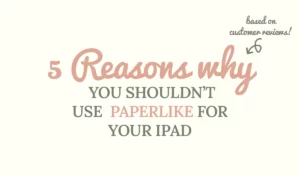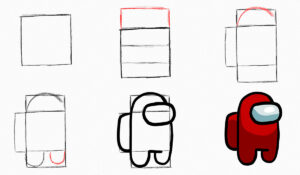Ever watched a creative competitive show in which competitors have to compete with each other by creating something like an outfit or a cake? Chances are you have heard the judges mention the word story. If they can understand the story the competitor wants to tell, their critiques will be positive. Let’s understand storytelling through visual art!
How to master storytelling through visual art
Difference story and narrative
The word story and narrative are often interchangeably used. Cambridge dictionary describes a story as: ”A description, either true or imagined, of a connected series of events.” They describe a narrative as: ”A story or a description of a series of events.” Way to confuse us, Cambridge!
Story
A story is simply a description of events.
Example:
”Today I went to the store. When I arrived I noticed that I lost my scarf. On my way back home I didn’t find my scarf. I guess I lost it somewhere else.”

Narrative
A narrative is how we tell that story. Every single person has their own perspective on things. This influences how we tell stories.
Example:
After Lisa arrived at the store she finally noticed that she had lost her scarf. She looked for it on her way back home, but scatterbrained as she is, she couldn’t find it. She probably lost it somewhere else.
The story is exactly the same. But the narrative is different: It’s told from a different perspective. The narrator could give false information or influence us into thinking negatively about Lisa.

Storytelling through visual art
Capture key moments
One of the smartest things to do when it comes to story-driven art is to create a key moment. In the world of concepting for movies and games, these are also known as keyframes. Keyframes are captured moments of importance in a story. They include the look and feel of that exact moment.
Don’t forget about your narrative!
Color and light

To create a certain mood for your artwork you should definitely use color and light to your benefit. By using light in a smart way, you can lead the viewer through your work. Color can describe a gloomy cold day, with the use of blues and grays. Or, in contrast, a happy childlike environment by using bold saturated colors.
Emotions
We often mirror other people’s facial expressions without even realising it. Interestingly there have been studies that found if you smile, you trick your brain into thinking you are actually happy.
So if we put 2 and 2 together, it means that if we show the viewer a facial expression like a smile, the viewer might mirror that emotion which then makes the viewer feel the same way. This way the artwork will have a bigger impact on the viewer which makes them more likely to engage with your work (e.g. share your work).
Choosing a medium

We should ask ourselves a few questions when choosing our medium:
- How complicated will my art be?
- When is it due?
- Can I strengthen my story with a certain medium?
- Do I want to sell my artwork?
How complicated will my art be?
Are you doing a simple illustration? Gouache is a popular choice for illustrators. Are you planning to do an entire scene? Working digitally gives you the opportunity to work nondestructively. Have a lot of intricate details? It can be hard (for beginners) to be precise with watercolors.
When is it due?
Colored pencils are one of my favorite mediums to work with. It is also one of the slowest mediums out there. So if I’m being commissioned to do concept art, I will never reach for my pencils. Acrylics dries fast, but oils can take weeks to dry. Working with deadlines? Digital is a popular choice.
Can I strengthen my story with a certain medium?
Charcoal looks very dramatic if used for portraits. Acrylics are excellent for painting clouds. Gouache gives a beautiful painterly style. I personally love it when people use gouache for nature scenes. Ever thought about mixing mediums? Use watercolor for skies, and gouache for other elements on your canvas.
Do I want to sell my artwork?
Is your goal to sell your artwork? If so, working traditionally might be a good idea. This way you can sell original artwork + prints. You can sell digital work as well. In fact, NFTs are making an uprise ever since digital artwork has been sold for millions of dollars. But please be aware of the negative impact on the environment they have, and why NFTs are so controversial.
Where to start

I’ll give you some pointers so you won’t feel overwhelmed. Start with drawing tutorials! Learning how to paint is a lot easier if you have some drawing experience. Watching other people draw helps as well. Follow peers and people who inspire you. All those little things will influence you and your art.
Browse tutorials
Learn step by step how to draw something. Each tutorial has a challenge for you to test your newly learned topic.
Browse basics
The basics will teach you the fundamentals of art. This is a good place to start if you’re a beginner (or if you want to refreshen your knowledge)!
Browse techniques
Browse techniques to learn how to deal with specific situations like hatching or how to transfer a picture on to your canvas.
I hope to see your work very soon,
♡ Laura




